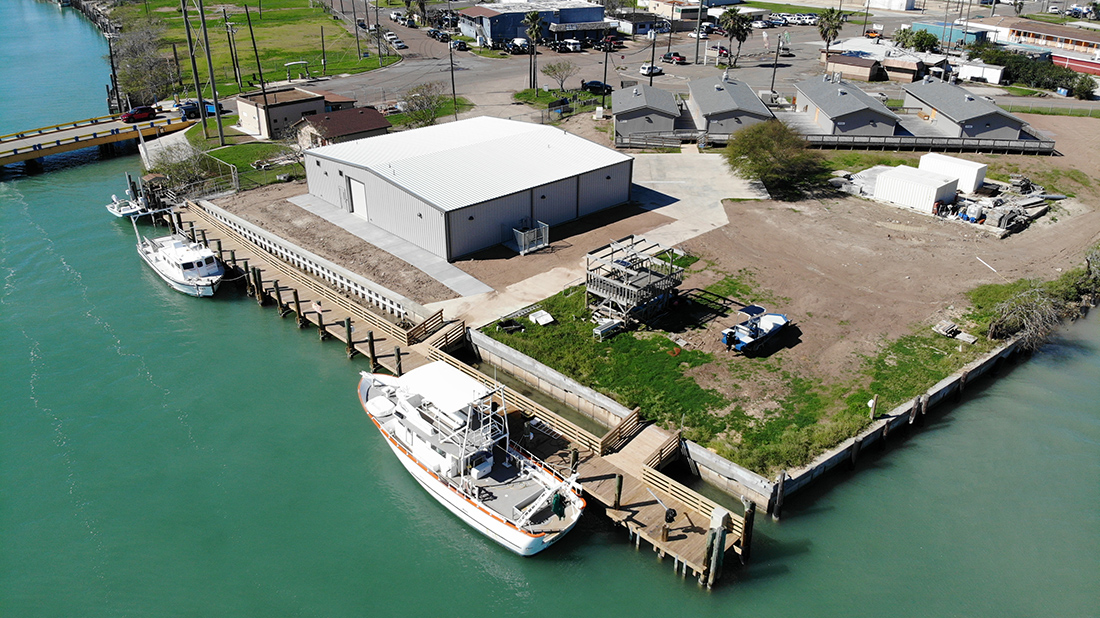
created by dji camera
The UTRGV Coastal Studies complex in Port Isabel has finalized its new operations building, which is expected to open in the upcoming weeks.
The new Marine Operations building will facilitate the research the School of Earth, Environmental and Marine Sciences has been conducting in the Gulf of Mexico.
David Hicks, director of the School of Earth, Environmental and Marine Sciences, said the building will function as a staging area for samples brought from the Gulf of Mexico.
The name of the building reflects the work of the school.
“They kind of interact between work that we do on the coastal environment, like on terrestrial habitats, and then work that we do on the Laguna Madre and offshore in the Gulf of Mexico,” Hicks said. “The samples can be offloaded off the boat and into the operations building, where we have a wet lab and samples can be processed there and cleaned before they go in the faculty laboratories that are also in Port Isabel.”
The 6,500-square-foot building cost close to $1 million that came from the UTRGV Foundation, according to Hicks.
It is composed of one office space, a wet processing station and fabrication work areas, and storage.
The facility was built in about a year.
Chelsea Pavliska, a graduate research assistant, said the new building will give her space to work and maintain equipment.
“It’ll give me space to be able to work on and maintain my ROV, which is a remotely operated vehicle,” Pavliska said. “I use that equipment to collect coral. So, we go out on a boat offshore and use the ROV to collect the corals and bring them back. That gives me space to work on my ROV in the dry lab, as well as a wet lab for other, like, biological studies.”
The Coastal Studies complex is located on the southeastern point of Port Isabel, at the intersection of South Garcia Street and Marina Drive.
“Right now, all the faculty research spaces are portables that have been outfitted for laboratory research,” Hicks said. “So, we are hopeful, you know, in the not too distant future, that there will actually be more of a permanent structure, research building, that will be built onto the property.”






